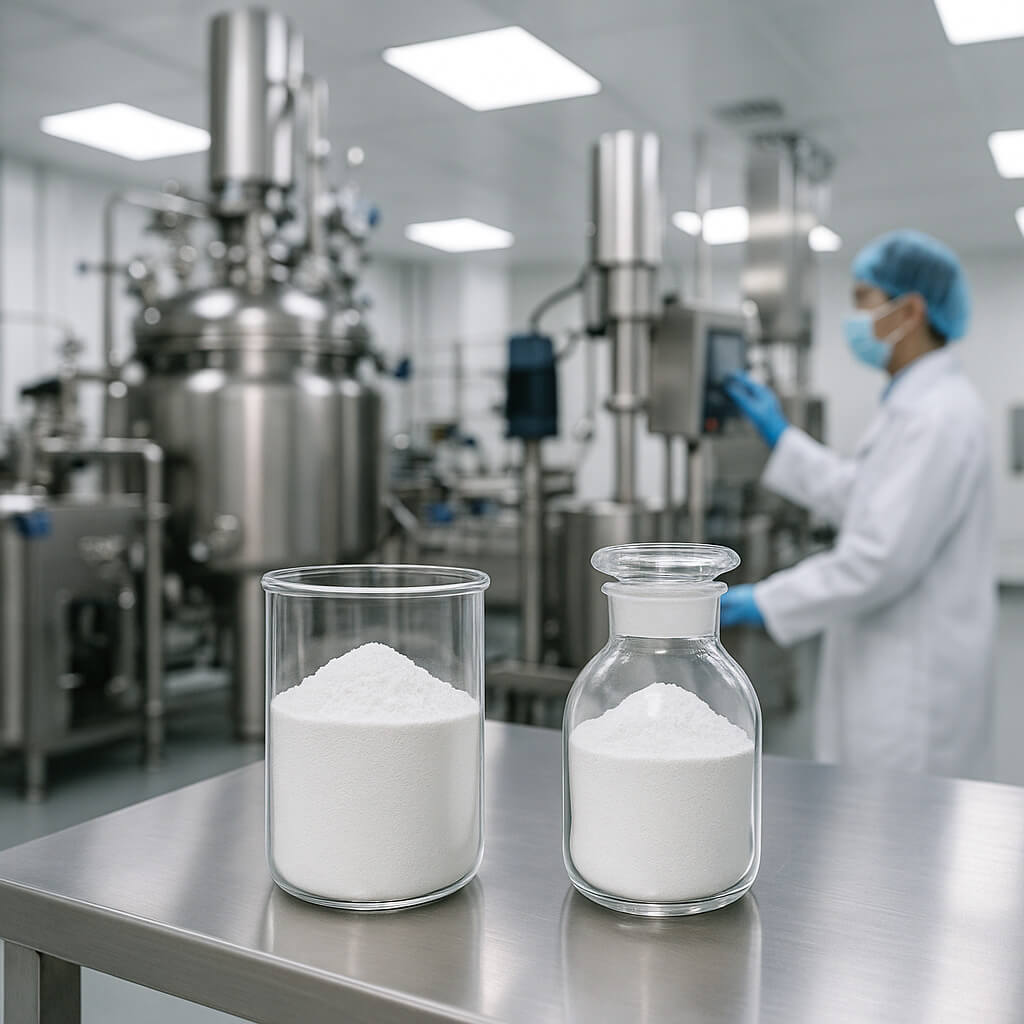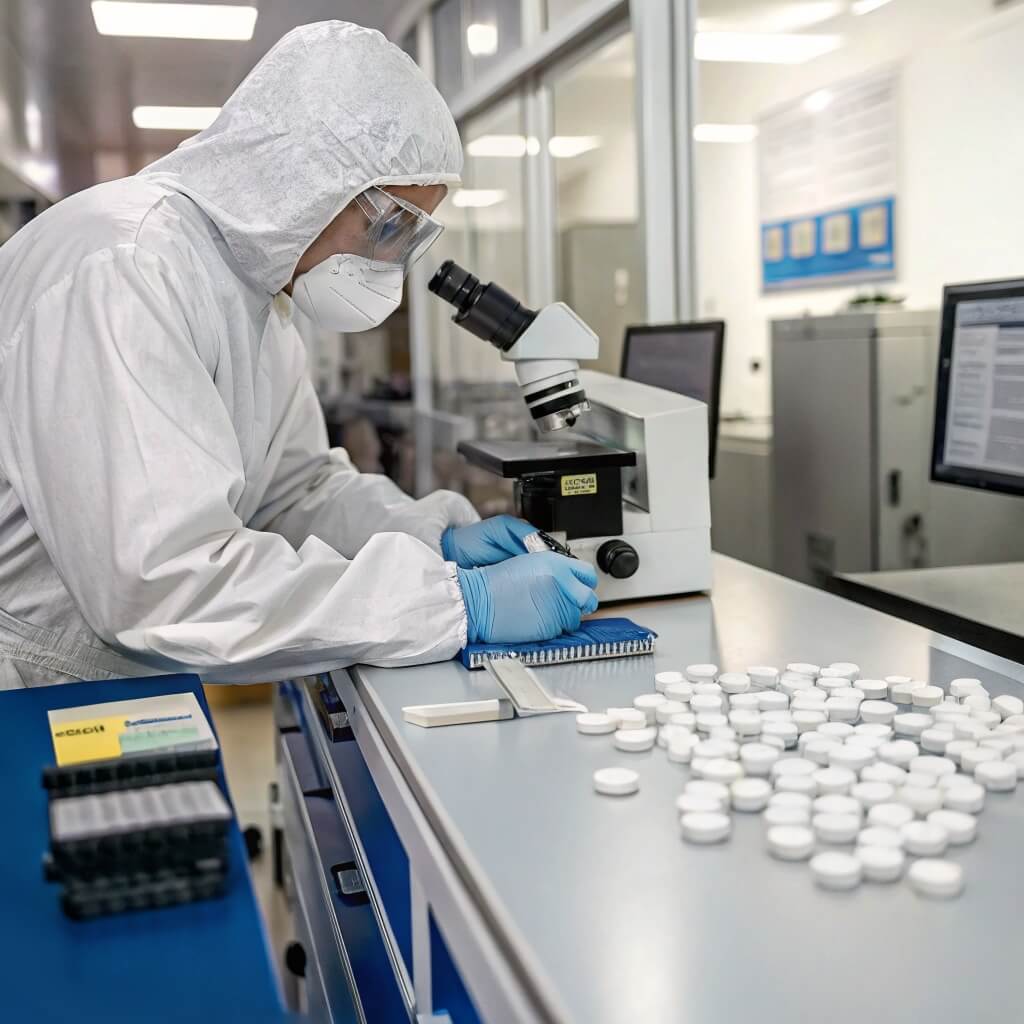Hydroxypropyl Methylcellulose (HPMC) stands as one of the most versatile polymers in modern industry, with applications spanning pharmaceuticals, construction, food production, and personal care. This article examines the critical properties that make HPMC indispensable across these diverse sectors. Understanding these properties is essential for procurement specialists, formulation scientists, and technical managers seeking to optimize product performance and manufacturing efficiency. Whether you’re selecting an HPMC grade for a new formulation or troubleshooting an existing process, this comprehensive analysis of HPMC properties will provide the practical insights needed to make informed decisions.

1. What Makes Hydroxypropyl Methylcellulose A Versatile Industrial Polymer?
Hydroxypropyl Methylcellulose is a semi-synthetic polymer derived from cellulose, the most abundant natural polymer on earth. The transformation from natural cellulose to HPMC involves chemical modifications that introduce methoxyl and hydroxypropyl substituents onto the cellulose backbone.
Here’s what you need to know: The unique combination of these substituents gives HPMC its exceptional versatility, allowing it to function effectively across applications that would normally require multiple different additives.
The chemical structure of HPMC consists of a cellulose backbone with anhydroglucose units connected by β-1,4-glycosidic bonds. The hydroxyl groups on this backbone are partially substituted with methoxyl and hydroxypropyl groups, with the degree and pattern of substitution determining many of the polymer’s key properties.
| Structural Feature | Description | Functional Impact | Industry Relevance |
|---|---|---|---|
| Cellulose Backbone | Linear chain of anhydroglucose units | Provides mechanical strength and film-forming ability | Critical for structural applications in construction and controlled release in pharmaceuticals |
| Methoxyl Groups | Hydrophobic substituents | Enhance organic solubility and thermal gelation | Important for thermal processing and compatibility with non-aqueous systems |
| Hydroxypropyl Groups | Hydrophilic substituents | Improve water solubility and surface activity | Essential for aqueous applications and interfacial stabilization |
| Degree of Substitution | Proportion of modified hydroxyl groups | Determines balance of hydrophilic/hydrophobic properties | Allows customization for specific application requirements |
The manufacturing process involves treating purified cellulose with sodium hydroxide, followed by reaction with methyl chloride and propylene oxide under controlled conditions. This process allows manufacturers to precisely engineer the substitution pattern and molecular weight distribution to create grades with specific performance characteristics.
HPMC has gained widespread adoption across diverse industries due to its multifunctional nature. In pharmaceuticals, it serves as a controlled-release matrix, tablet binder, and film-coating agent. The construction industry utilizes it as a water-retention agent, rheology modifier, and adhesion promoter in mortars and renders.
2. How Do Solubility Properties Of HPMC Affect Its Applications?
The solubility characteristics of HPMC represent one of its most valuable properties, directly influencing its functionality across diverse applications. Understanding these solubility behaviors is essential for effective formulation and processing.
But here’s the interesting part: HPMC exhibits unusual solubility behavior compared to most polymers, with temperature-dependent solubility that can be leveraged for unique processing advantages.
Water solubility is perhaps the most commercially significant property of HPMC. At room temperature, HPMC readily dissolves in water to form clear solutions across a wide concentration range. This solubility stems from the hydroxypropyl groups, which enhance hydration and water interaction.
| Temperature Range | HPMC Solubility Behavior | Processing Implications | Application Examples |
|---|---|---|---|
| Cold Water (<20°C) | Readily soluble, forms clear solutions | Preferred for direct dissolution | Cold-processed foods, pharmaceutical solutions |
| Warm Water (20-50°C) | Soluble with decreasing solubility as temperature rises | Requires careful temperature control | Most standard manufacturing processes |
| Hot Water (50-70°C) | Decreasing solubility, approaching insolubility | May require special dispersion techniques | Hot-fill applications, certain construction products |
| Very Hot Water (>70°C) | Insoluble, forms heat-set gel | Requires hot/cold technique for dispersion | Thermally processed foods, certain pharmaceutical processes |
| After Cooling from Hot | Returns to soluble state | Enables unique processing options | Products requiring thermal processing |
Organic solvent compatibility varies with the substitution pattern of HPMC. Grades with higher methoxyl content show increased solubility in organic solvents such as ethanol, isopropanol, and various glycol ethers.
Temperature effects on HPMC solubility are particularly noteworthy. Unlike most materials that become more soluble at higher temperatures, HPMC exhibits inverse solubility behavior—becoming less soluble as temperature increases. This property enables unique processing options, such as the “hot/cold” technique for dispersion.
pH influence on HPMC dissolution is relatively minimal compared to ionic polymers. As a non-ionic polymer, HPMC maintains consistent solubility across a wide pH range (approximately 3-11), making it suitable for formulations with varying acidity or alkalinity.
3. What Viscosity Characteristics Define HPMC Performance?
Viscosity represents one of the most defining properties of HPMC, directly influencing its functionality across applications. The ability to precisely control solution viscosity through grade selection makes HPMC an exceptionally versatile rheology modifier.
You might be wondering: How exactly does HPMC viscosity translate to real-world performance? The answer lies in understanding both the fundamental viscosity behavior and its practical implications.
Viscosity grade classification systems for HPMC typically use nominal viscosity values measured under standardized conditions—usually a 2% aqueous solution at 20°C. Commercial grades range from very low viscosity (3-5 mPa·s) to extremely high viscosity (200,000+ mPa·s).
| Viscosity Category | Typical Range (2% solution) | Molecular Weight Range | Common Applications | Key Performance Attributes |
|---|---|---|---|---|
| Extra Low | 3-15 mPa·s | 10,000-25,000 | Tablet coatings, Eye drops | Rapid dissolution, Minimal texture impact |
| Low | 15-100 mPa·s | 25,000-65,000 | Liquid pharmaceuticals, Spray applications | Good flow, Moderate stabilization |
| Medium | 100-1,000 mPa·s | 65,000-120,000 | General-purpose thickening, Construction products | Balanced flow/stability properties |
| High | 1,000-15,000 mPa·s | 120,000-250,000 | Sustained release matrices, Adhesives | Strong stabilization, Good water retention |
| Extra High | 15,000-200,000+ mPa·s | 250,000-400,000+ | Extended release systems, Heavy-duty construction products | Maximum water retention, Highest mechanical strength |
Concentration-viscosity relationships for HPMC follow a power law, with viscosity increasing exponentially as concentration increases. This relationship typically follows the equation: η = K·C^a, where η is viscosity, C is concentration, and K and a are constants specific to the HPMC grade.
Shear-dependent behavior is another critical aspect of HPMC viscosity. HPMC solutions exhibit pseudoplastic (shear-thinning) flow, where viscosity decreases as shear rate increases. This behavior provides significant processing advantages—solutions flow readily during high-shear operations like mixing, pumping, or spraying, but maintain higher viscosity at rest to provide stability.
4. How Does HPMC’s Film-Forming Ability Benefit Various Industries?
The film-forming capability of HPMC represents one of its most valuable functional properties, enabling applications ranging from pharmaceutical coatings to construction sealants. This property stems from HPMC’s unique molecular structure and behavior during solvent evaporation.
The real advantage here is that HPMC forms continuous, flexible films with tunable properties that can be optimized for specific application requirements through grade selection and formulation adjustments.
The film formation mechanism involves several stages. Initially, HPMC dissolves in water or a water-alcohol mixture to form a solution. As the solvent evaporates, polymer concentration increases, causing chain entanglement and eventual coalescence into a continuous film.
| Film Property | Influencing Factors | Measurement Methods | Industry Applications |
|---|---|---|---|
| Tensile Strength | Molecular weight, Concentration, Additives | Tensile testing, Puncture resistance | Pharmaceutical coatings, Food packaging |
| Elasticity | Substitution type, Plasticizer content | Elongation at break, Elastic modulus | Flexible coatings, Temporary protective films |
| Transparency | Molecular weight distribution, Processing conditions | Light transmission, Haze measurement | Clear coatings, Optical films |
| Adhesion | Substitution pattern, Surface preparation | Peel tests, Shear adhesion | Construction adhesives, Transdermal patches |
| Dissolution Rate | Substitution type, Film thickness | Dissolution testing, Disintegration time | Immediate vs. controlled release coatings |
Mechanical properties of HPMC films can be precisely controlled through grade selection and formulation. Tensile strength typically increases with molecular weight, while elongation properties are influenced by substitution type—higher hydroxypropyl content generally yields more flexible films.
Barrier properties and permeability characteristics make HPMC films particularly valuable in certain applications. HPMC films exhibit moderate moisture vapor transmission rates—lower than hydrophilic polymers like polyvinyl alcohol but higher than hydrophobic polymers like ethylcellulose.
5. What Thermal Properties Should Be Considered When Working With HPMC?
The thermal properties of HPMC significantly influence its processing requirements and application performance. Understanding these thermal characteristics is essential for proper material selection and process design across industries.
What makes this particularly important is that HPMC exhibits unique thermal behavior that can be either advantageous or challenging depending on the application and processing conditions.
Thermal gelation represents the most distinctive thermal property of HPMC. When HPMC solutions are heated above a critical temperature (typically 65-90°C, depending on the grade), they undergo phase separation and form a reversible gel structure.
| Thermal Property | Typical Values/Range | Measurement Methods | Processing Implications |
|---|---|---|---|
| Gelation Temperature | 65-90°C (grade dependent) | Cloud point, Rheological methods | Determines maximum processing temperature in solution |
| Glass Transition Temperature | 170-190°C | Differential scanning calorimetry | Affects solid-state processing and storage stability |
| Thermal Stability Onset | 190-220°C | Thermogravimetric analysis | Sets upper temperature limit for processing |
| Decomposition Temperature | 280-300°C | Thermogravimetric analysis | Critical safety parameter for high-temperature processing |
| Specific Heat Capacity | 1.2-1.5 J/g·K | Differential scanning calorimetry | Influences heating/cooling rates during processing |
Glass transition temperature (Tg) for dry HPMC typically ranges from 170-190°C, though this can be significantly reduced by moisture or plasticizers. The Tg represents the temperature at which HPMC transitions from a glassy, brittle state to a more rubbery, flexible state.
Thermal stability limits are critical considerations for processing HPMC. The polymer begins to show signs of degradation at temperatures above 190-220°C, with significant decomposition occurring above 280-300°C.
6. How Do Surface-Active Properties Of HPMC Impact Formulations?
The surface-active properties of HPMC play a crucial role in many applications, influencing interfacial phenomena that affect product stability, appearance, and performance. These properties stem from HPMC’s amphiphilic nature—containing both hydrophilic and hydrophobic regions within its molecular structure.
What you’ll find surprising is that despite not being classified as a traditional surfactant, HPMC exhibits remarkable surface activity that can eliminate the need for additional surfactants in many formulations.
Surface tension reduction capabilities of HPMC are significant, though less pronounced than those of conventional surfactants. HPMC typically reduces the surface tension of water from approximately 72 mN/m to 42-55 mN/m, depending on the grade and concentration.
| Surface-Active Property | Mechanism | Measurement Methods | Application Benefits |
|---|---|---|---|
| Surface Tension Reduction | Adsorption at air-water interface | Du Noüy ring, Pendant drop | Improved wetting and spreading in coatings and adhesives |
| Interfacial Tension Reduction | Adsorption at oil-water interface | Spinning drop, Interfacial rheology | Enhanced emulsion stability in foods and personal care products |
| Steric Stabilization | Polymer adsorption on particle surfaces | Zeta potential, Particle size stability | Suspension stability in pharmaceuticals and paints |
| Protective Colloid Action | Formation of polymer layer around droplets/particles | Microscopy, Stability testing | Prevention of coalescence in emulsions and flocculation in suspensions |
| Foam Stabilization | Viscosity enhancement and film formation at bubble interfaces | Foam height, Foam stability | Controlled foaming in personal care and food products |
Emulsification and stabilization mechanisms of HPMC differ from those of conventional surfactants. Rather than primarily reducing interfacial tension, HPMC stabilizes emulsions through viscosity enhancement of the continuous phase, formation of a steric barrier around droplets, and creation of a structured network in the continuous phase.
7. What Biological And Safety Properties Make HPMC Valuable In Sensitive Applications?
The biological and safety properties of HPMC are fundamental to its widespread use in pharmaceuticals, food products, and personal care applications. These properties establish HPMC as a material of choice for applications with direct human contact or consumption.
It’s worth emphasizing that HPMC’s exceptional safety profile has been established through decades of use and extensive toxicological studies, making it one of the most trusted polymers for sensitive applications.
The biocompatibility profile of HPMC is excellent, with minimal potential for irritation or sensitization. HPMC is non-irritating to skin, eyes, and mucous membranes at typical use concentrations.
| Safety Aspect | Evaluation Methods | Regulatory Status | Application Significance |
|---|---|---|---|
| Acute Toxicity | LD50 studies, Irritation testing | Extremely low toxicity (LD50 >5000 mg/kg) | Safe for use in oral and topical products |
| Chronic Toxicity | Long-term feeding studies | No adverse effects at high doses | Suitable for daily consumption products |
| Mutagenicity/Carcinogenicity | Ames test, Carcinogenicity studies | No mutagenic or carcinogenic potential | Acceptable for long-term use products |
| Skin/Eye Irritation | Draize test, In vitro alternatives | Non-irritating at typical concentrations | Appropriate for personal care and cosmetics |
| Allergenicity | Sensitization studies | Non-sensitizing, extremely rare allergic reactions | Widely used in hypoallergenic formulations |
Regulatory status and approvals for HPMC are extensive across global markets. In the United States, HPMC is FDA-approved for pharmaceutical use (included in the USP/NF) and is Generally Recognized as Safe (GRAS) for food applications. In Europe, it is approved as a food additive (E464) and complies with European Pharmacopoeia standards.
Conclusion
The diverse properties of Hydroxypropyl Methylcellulose make it an exceptionally versatile polymer with applications spanning numerous industries. From its solubility characteristics and viscosity profiles to its film-forming capabilities and surface-active properties, HPMC offers formulators a multifunctional ingredient that can simplify formulations while enhancing product performance. The thermal behavior and biological safety of HPMC further expand its utility, particularly in sensitive applications requiring temperature processing or direct human contact.
Understanding these properties allows technical professionals to select the optimal HPMC grade for specific applications and to anticipate how the material will behave under various processing and use conditions. The interrelated nature of these properties means that changing one parameter—such as substitution pattern or molecular weight—often affects multiple functional characteristics, requiring a holistic approach to grade selection and formulation development.
For purchasing managers and formulation scientists working with HPMC, this knowledge translates to more efficient material selection, improved product performance, and potentially reduced costs through formulation optimization.
FAQ
Q1: How do different grades of HPMC compare in terms of their properties?
HPMC grades differ primarily in three key properties: viscosity (determined by molecular weight), substitution type (ratio and distribution of methoxyl and hydroxypropyl groups), and particle size. Viscosity grades range from 3 mPa·s to over 200,000 mPa·s (2% solution), directly affecting thickening efficiency and mechanical strength. Substitution types are classified by pharmacopeia designations (e.g., HPMC 2208, 2906, 2910), with higher methoxyl content increasing thermal gelation and organic solubility, while higher hydroxypropyl content improves cold water solubility. Particle size grades range from fine (20-75 microns) to coarse (125-250 microns), affecting dissolution rate and flow properties.
Q2: What are the compatibility issues to consider when formulating with HPMC?
When formulating with HPMC, several compatibility considerations are important. HPMC may interact with strongly ionic compounds, particularly multivalent cations (calcium, aluminum), potentially causing viscosity reduction or precipitation at high concentrations. Strongly acidic or alkaline conditions (pH <3 or >11) can accelerate hydrolysis during prolonged storage or elevated temperatures. Certain oxidizing agents may degrade HPMC, reducing molecular weight and viscosity. Compatibility with other polymers varies—HPMC generally works well with other non-ionic polymers but may compete for water with highly hydrophilic polymers.
Q3: How stable are the properties of HPMC under various storage conditions?
HPMC properties remain remarkably stable under proper storage conditions. Dry HPMC powder maintains its viscosity and functionality for 2-3 years when stored in sealed containers at 15-30°C and relative humidity below 60%. Higher temperatures (>40°C) can cause gradual degradation through oxidation or hydrolysis, while excessive humidity (>70% RH) may lead to caking and reduced dispersibility. Freezing conditions do not significantly affect dry HPMC but may impact the structure of HPMC solutions or gels. In solution, HPMC is most stable at pH 6-8, with accelerated degradation occurring under strongly acidic or alkaline conditions.
Q4: Can the properties of HPMC be modified after manufacturing?
While the fundamental molecular properties of HPMC (substitution pattern and molecular weight) are fixed during manufacturing, several post-production modifications can alter its functional properties. Physical modifications include particle size reduction through milling to increase dissolution rate, surface treatment with glyoxal or other agents to improve dispersibility, and agglomeration to enhance flow properties. Blending different HPMC grades can achieve intermediate properties or performance profiles not available from standard grades. Formulation approaches can significantly modify HPMC functionality—adding salts to alter solution properties, combining with other polymers for synergistic effects, or incorporating plasticizers to modify film characteristics.
Q5: How do the properties of HPMC compare to other cellulose derivatives?
HPMC offers a distinct property profile compared to other cellulose derivatives. Versus Methylcellulose (MC), HPMC provides better cold water solubility and lower thermal gelation temperatures, though MC forms stronger gels. Compared to Carboxymethylcellulose (CMC), HPMC offers superior pH stability and compatibility with electrolytes but lower viscosity efficiency. Hydroxyethylcellulose (HEC) provides higher clarity in solution than HPMC but lacks thermal gelation properties and has lower surface activity. Ethylcellulose (EC) is water-insoluble unlike HPMC, making it suitable for water-resistant applications. Compared to Hydroxypropylcellulose (HPC), HPMC typically offers better cost-efficiency and lower surface activity.




